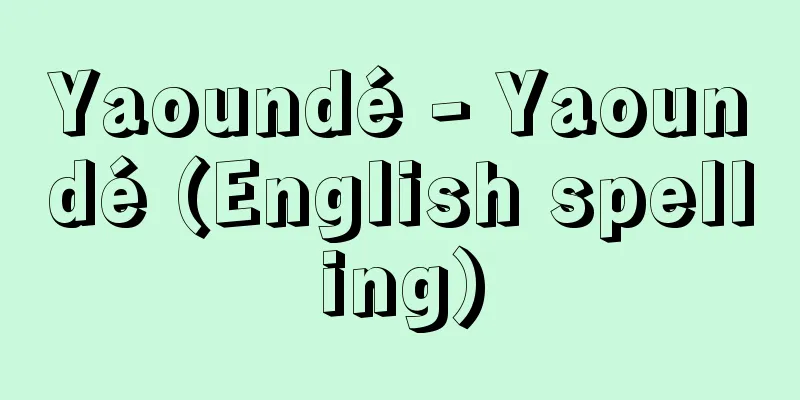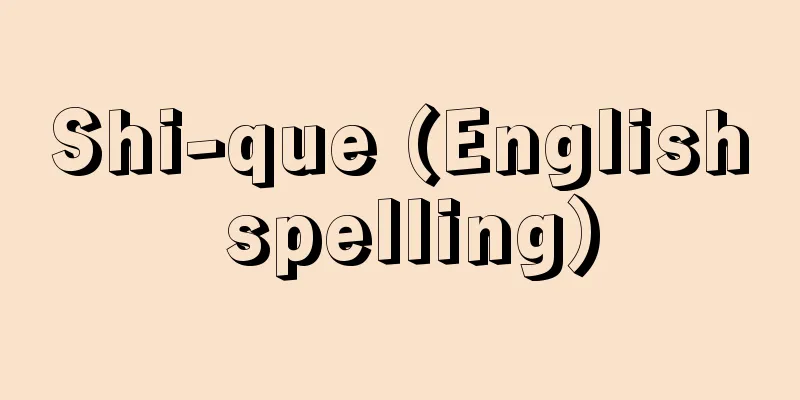Ryojin Hisho - Ryojin Hisho

|
A collection of modern folk songs in a broad sense. Originally consisting of 10 volumes, only volumes 1 and 2 remain today. The title is based on the description of the extremely delicate singing voice, as in "Ryōjin almost moves" (Azuma Kagami, April 8, 12th year of Bunji). The Honchō Shojaku Mokuroku (listed at the end of the Kamakura period) states "Ryōjin Hisho. 20 volumes. Imperially compiled by Emperor Go-Shirakawa," which is thought to indicate that this book was originally part of the 10-volume Ryōjin Hisho Kudenshu. Volumes 1 to 9 were completed by 1169. This book may have been created around the same time. The extant volume 1 is thought to be an excerpt, and contains 21 poems in total: 10 Nagauta (long poems), 1 Koyanagi (old verse), and 10 Imayo (modern style). The Nagauta are songs in the style of Tanka, the Koyanagi are often irregular in form with accompanying musical accompaniment, and the Imayo are modern songs in the narrow sense (four lines in 7-5 or 8-5 rhythm). Volume 2 contains 220 Homonuta (law and literature poems), 204 Shikunokamiuta (four-line divine poems), and 121 two-line divine poems, for a total of 545 poems. Two other poems are quoted in the Fuboku Wakashu. The Homonka are arranged in the order of Buddha, Law, Monk, and Miscellaneous, while the Shikku Shinka are arranged in the order of Jinbun, Buddhist Songs, Sutra Songs, Monk Songs, Miraculous Shrine Songs, and Miscellaneous Songs. The Nikku Shinka are in the form of short poems, and include 61 shrine songs. Half of the songs praise Buddhism, and the Homonka collection of over 110 songs from the 28 chapters of the Lotus Sutra is the highlight of this book. The 86 miscellaneous songs in the Shikku Shinka are songs that deviate from the standard four-line format and openly appeal to the joys and sorrows of the common people, and there are quite a few short chapters in the Nikku Shinka that are full of life and in the style of folk songs. There are also poems about Shirabyōshi, Kugutsu, and prostitutes, who were involved in the melodic aspects of this book. This book had been buried for a long time, but a transcription was discovered in recent times. Both are in the collection of the Tenri Library. The Ryojin Hisho Kudenshu (only a fragment of volume 1 and volume 10 remain) clearly shows Emperor Goshirakawa's passionate devotion to Imayo, including the singing method and tradition of Imayo. [Tokue Motomasa] "Ryōjin Hisō, annotated by Shida Nobuyoshi (included in the Japanese Classical Literature Series 73, 1965, Iwanami Shoten)" " Ryōjin Hisō, annotated and translated by Niima Shinichi (included in the Japanese Classical Literature Collection 25, 1976, Shogakukan)" [Reference] |Volume 10: Written by Emperor Goshirakawa ( manuscript held at the National Diet Library ) "Ryōjinhishō Oral Tradition Collection" Source: Shogakukan Encyclopedia Nipponica About Encyclopedia Nipponica Information | Legend |
|
広義の今様(いまよう)歌謡の集成。もと10巻、現存本は巻1/巻2の2巻のみ。書名は「梁塵殆(ほと)んど動く可(べ)し」(『吾妻鏡(あづまかがみ)』文治(ぶんじ)2年4月8日条)のごとく、歌声がきわめて微妙なることの形容に基づく。『本朝書籍(しょじゃく)目録』(鎌倉末期の成立)に「梁塵秘抄。廿巻(にじっかん)。後白河(ごしらかわ)院勅撰(ちょくせん)」とあるのは、本書が本来『梁塵秘抄口伝(くでん)集』10巻と一括されたものであることを示すものと考えられる。巻1~巻9は嘉応(かおう)元年(1169)までに成った。本書の成立もほぼ同時代か。現存本巻1は抄出本(しょうしゅつぼん)と考えられ、長歌(ながうた)10首、古柳(こやなぎ)1首、今様10首の計21首。長歌は短歌体の謡い物、古柳は囃子詞(はやしことば)を伴う不整形式のものが多く、今様は狭義の今様歌謡(七五調または八五調四句)。巻2は法文歌(ほうもんうた)220首、四句神歌(しくのかみうた)204首、二句神歌121首の545首をそれぞれ収める。ほかに『夫木(ふぼく)和歌抄』が2首引用している。法文歌は仏・法・僧・雑の順、四句神歌は神分(じんぶん)・仏歌・経歌・僧歌・霊験所歌・雑歌の順で構成され、二句神歌は短歌体のもので、神社歌61首を含む。半数の謡い物は仏法をたたえたもので、法文歌中の法華経二十八品歌百十数首の群作は本書の白眉(はくび)、四句神歌中の雑86首は、四句の定型から外れた、庶民の哀歓をあからさまに訴える謡い物が多く、二句神歌のなかには生気あふれる民謡風の短章が少なくない。また、本書の旋律面にかかわった白拍子(しらびょうし)・くぐつ・遊女を詠み込んだものもある。 本書は、久しく埋もれていたが、近代になってその転写本が発見された。ともに天理図書館蔵。『梁塵秘抄口伝集』(巻1の断簡と巻10のみ現存)からは、今様の唱法・伝承など、後白河法皇の今様に対する熱烈な傾倒が如実にうかがわれる。 [徳江元正] 『志田延義校注『梁塵秘抄』(『日本古典文学大系73』所収・1965・岩波書店)』▽『新間進一校注・訳『梁塵秘抄』(『日本古典文学全集25』所収・1976・小学館)』 [参照項目] |巻10 後白河天皇撰 写本国立国会図書館所蔵"> 『梁塵秘抄口伝集』 出典 小学館 日本大百科全書(ニッポニカ)日本大百科全書(ニッポニカ)について 情報 | 凡例 |
<<: Ryojin Hisho Oral Tradition Collection - Ryojin Hisho Kudenshu
>>: Conscientious objection - ryousintekiheikikyohi
Recommend
chute
…These remains give a real sense of the fact that...
Inflation - Inflation
A phenomenon in which prices continue to rise, occ...
Issued at face value - school
When issuing new public bonds or stocks, the act o...
Ereck
…An ancient city in the southernmost part of Meso...
Candlestick - Candlestick
A hand-held candlestick is called a teshiyoku (ha...
Giorgio Ghisi
1520 or 21-82 Italian copperplate engraver of the ...
Shimazu Family Documents - Shimazuke Monjo
These are documents from the Middle Ages to the ea...
Oil-free bearing - oilless bearing
Also called oilless bearings. They belong to the c...
Asano clan
The name refers to the Toki clan of the Raiko lin...
Republic
A county in the eastern part of Qinghai Province,...
Thiès - Thiès (English spelling)
A commercial and industrial city in the west of S...
Nematicides - Nematicides
Many nematodes parasitize plants and are important...
Parliament Act
This law was enacted in 1911 to restrict the power...
Stingray - Akaei
A general term for a family or genus of the order...
Kirifuri Falls - Kirifuri Falls
Located in northwest Tochigi Prefecture, the Itana...









